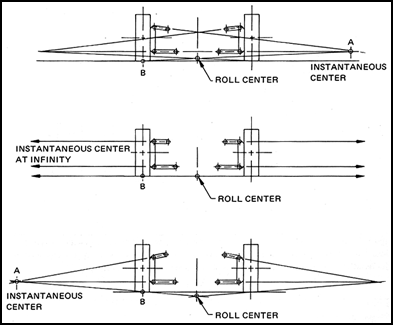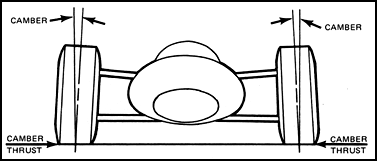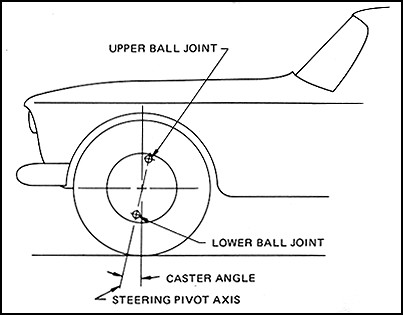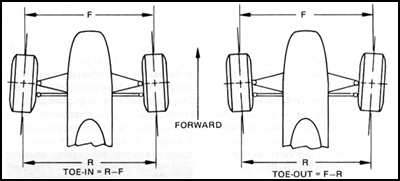Roll Center (RC) - 
Can be defined as an imaginary point that a car rolls around when it
corners. Imagine you are looking at the back of a car as it enters a corner,
as the car starts to lean, you can imagine a point the car is 'twisting'
around.
The front and rear roll centers will usually be at different heights,
you can use this as another tuning aid.
Firstly we need to determine the roll center height. This is usually
easier to draw than to measure. Look at the back of the car, imagine a
line traced along the upper and lower suspension links, unless these links
are parallel, these lines will intersect somewhere.
Now imagine a line going from this intersection point to the center
of the opposite tires contact patch with the ground. Where this line intersects
with the center of the car is your roll center.
Keeping up so far, OK now things get complicated, as the car moves on
it's suspension, the roll center will move, it even moves as the car rolls!
So unless you want to calculate it for each possible combination of suspension
positions, you will have to make some estimations.
OK now we have a pretty good idea of where the roll center is, how does
it affect handling? There is one important relationship to consider, the
distance between the roll center and the cars center of gravity (C of G).
Under lateral forces (turning) the car will try to keep going straight,
(Newton explained all this stuff) while the tires will try to turn; the
sideways force acting on the car can be said to be acting at one point,
the C of G. The forces resisting the car can be said to be acting at one
point, the RC. The further these two points are apart, the greater effect
the lateral forces will have on the suspension, or the more the car will
roll. Theoretically, if the C of G was below the RC, the car would lean
into corners like a motorbike! (Don't try this, it will be a bad thing)
So how do you adjust RC? It's actually fairly easy, if you look at it,
if you lower the car 1mm, the roll center will actually move further. You
may have heard people say that if you lower the front, it will put more
weight on the wheels and the front will grip more. What actually happens,
is that when you lower the front, the roll center drops further than the
rest of the car, and this effectively softens the front suspension in roll,
much the same as fitting softer springs. You can also adjust RC by moving
the upper camber links around, which brings us to camber change.
This is actually fairly simple, if you look at the camber on the car,
then compress the suspension all the way, you will see that you now have
more camber. If you look at the way the upper link moves through the suspension
travel, you can see that the shorter the link or the closer the link is
to vertical, the more camber change you will get. Camber change is a very
useful tuning aid, you will need to have some to counter the fact that
the car rolls while cornering. If you have more, it enables you to have
a small amount of camber when you're going in a straight line, and then
have the car automatically dial in more when you're cornering. Problem,
what happens when the car hits a bump? The car instantly develops heaps
of negative camber, or when the rear drops into a hole it develops positive
camber. Neither of which are good for traction. Basically running large
amounts of camber change is OK if you're running on a smooth surface, with
stiff springs. |






